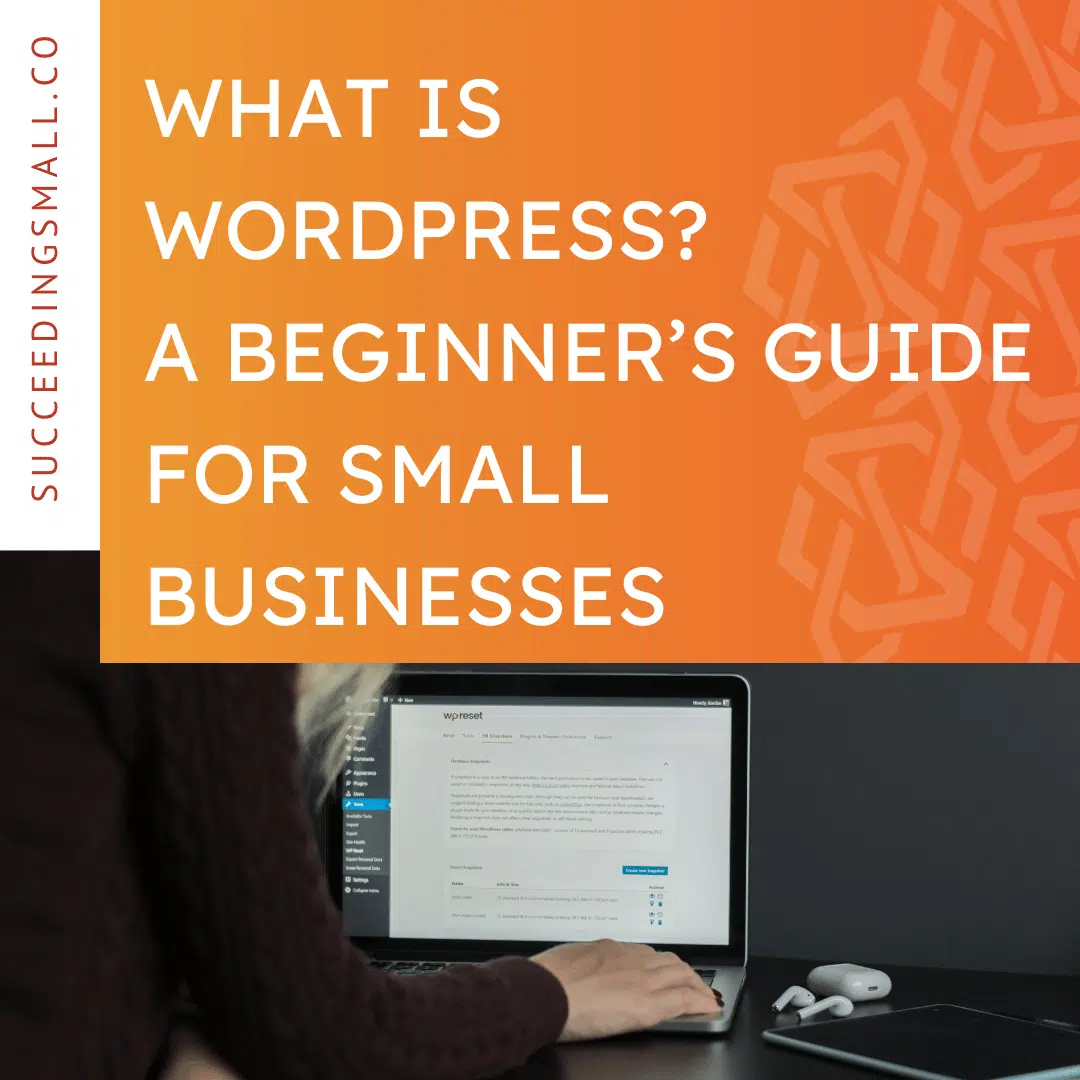Okay, friends, let’s talk about paid advertising.
This is a great marketing strategy for getting new customers in the door quickly. Compared to other marketing strategies that take longer to perform, like social media or search engine optimization, paid digital ads get you instant visibility.
In order to do this type of marketing, however, you need to pay for this visibility. Digital ads rely on a designated budget that you spend in exchange for promotion.
With digital advertising, you get charged whenever someone interacts with your ad. This is called pay-per-click advertising. Because of this billing system, you get very specific insights about how well your ad campaign performs that you may not have gotten with other traditional marketing avenues.
There are so many exciting directions we could talk about with paid ads, but today, I specifically want to dive into two platforms: Google Ads and Facebook ads. I want to go over the differences between them and when to choose them as channels for your marketing strategy.
By the end of this episode, you will know the strengths of both, a minimum recommended ad spend budget, and when NOT to use them.
Ready to put your advertising strategy hat on? It’s about to get technical, so let’s dive in.
Google Ads
Let’s start with Google Ads. Google Ads is one of my favorite marketing tools for small businesses because of its great return on investment (ROI) and highly detailed insights that let you know when people converted into a lead.
Why Choose Google Ads?
Types of Google Ads
Now, you can create several types of ads with Google. The most common types are:
- Text ads
- Display ads
Text ads are what show up at the top of the search results page whenever someone types something in Google. They are usually the first three results and will have a little “ad” box that separates the paid spots from the unpaid, or organic spots, below.
You can also create something called Display Ads. Display Ads are graphics, videos, or other visual ads that follow you around on the internet. These ads pop up on sidebars or banners, in Gmail, or on Youtube. Display Ads are also what are used to re-target customers. If you’ve ever been shopping on an eCommerce website and started seeing ads with whatever you just looked at or put in your cart, that’s a display ad stalking your every move!
I’m going to primarily be talking about text ads for the rest of this episode because this is usually the most common campaign type for small businesses.
Strengths & Weaknesses of Google Ads
Let’s talk about the strengths and weaknesses of Google Ads.
Google Text Ads work GREAT when people are actively SEARCHING for what you do. People have to know what your product/service is enough to search for it online. If you have an innovative, new-to-market business concept, Google is not the best tool for you–because people don’t know they need it yet. You will have to invest in educating your consumer FIRST, which is where Facebook Ads becomes a very beneficial tool.
Recommended Budget for Google Ads for Small Businesses
Because Google Ads functions on a pay-per-click system, you have to know what a lead is worth to you to determine how much your budget should be for Google Ads. The more competitive your industry is, the more you will pay per click. If you run an HVAC company, you may be looking at $20/click for some keywords. But if you are a car detailing company, you could just be paying $2.00-$3.00 per click. You can estimate what you will pay per click by going to Google’s Keyword Planner. This is a great free tool that you can use to do keyword research.
I always recommend that small businesses have AT LEAST a budget of $1,000/mo for Google Ads. If they are in a more competitive market or are trying to sell multiple products/services in multiple areas, I would recommend $2,000-$3,000. It all depends on what keywords you are targeting and how much that click is worth to you.
So, to sum up, Google Ads are great when you know people are searching for your product or service. They have a high ROI because of this. Your starting budget should usually start at $1,000/mo and increase depending on how competitive your industry is or how broad your business offerings are.
Facebook Ads
Even though we’ve just scratched the surface of Google Ads, I want to jump into another great advertising strategy for small businesses: Facebook Ads. If you want to advertise on Facebook or Instagram, you’ll use Meta Ads Manager. Meta is the parent company of both Facebook and Instagram, and they offer a unique dashboard to create customized ad campaigns.
This is VERY different from just “boosting” a post on Facebook or Instagram. Boosting is available to you in the app itself, and you can set a budget and have a few audience targeting options, but it is nowhere near as customizable as when you run an actual Meta ad.
Benefits of Facebook Ads
Social media ads are fantastic because you can highly target your customer. You can target someone based on location, demographics, marital status, family life, income level, interests and hobbies, similar pages/businesses they follow, and so much more. You can’t get this level of detail with Google Ads (because the keywords do that for you), so this is often an advantage of social media advertising over pay-per-click campaigns on Google.
When to Use Facebook Ads
Social media advertising is a great avenue when you meet any of the following criteria:
- You need to educate your customer on your business
- You want to grow your email list
- You have a low-hanging offer/discount to get people in the door (especially if you’re a service-based business)
- You want to build brand awareness and create relationships
- You have a product-based business
Facebook ads are amazing for attracting new audiences who may not know they need your product/service.
Cons of Facebook Ads
Facebook ads can be much more challenging than Google Ads when it comes to making a sale. This is because of the default nature of social media platforms and how people use them. People use social media to relax, break from reality, and connect with friends and family. They hop on Facebook or Instagram during their lunch breaks or at night before bed. This is a much more casual browsing experience than when people search on Google. Search intent doesn’t exist for this type of advertising.
If you are going to capture someone’s attention on social media, your ad has to be SO interesting and compelling that it has to “stop the scroll.” You have to get very creative with your media, your messaging, and how you want your customers to convert to make Facebook Ads work for your business.
Recommended Budget for Facebook Ads for Small Businesses
That being said, Facebook Ads usually take more time and have a higher budget recommendation than Google Ads. Cost per click is generally cheaper on Facebook than on Google, but getting an ROI usually takes longer because you have to nurture people longer. You have to persuade people to buy on social media, whereas, on Google, people already want to buy–they just need to find you.
I recommend having a budget of at least $2,000+ for Facebook ads. I would also be prepared to set aside at least six months’ worth of funds to really see it through. You’ll need plenty of cushion funds to give Facebook time to show your ad to the right audience, allow you to A/B test, and nurture people long enough so they know, like and trust your brand.
The ultimate difference between Google & Facebook Ads
When I was scripting this episode, I found this amazing quote from Wordstream that perfectly describes the differences between these platforms. They said, “Google Ads helps you find new customers, while Facebook helps new customers find you.”
This is such a great distinguishing factor because it describes the mindset that people have when they see your ad on each platform. On Google, people are ready to buy. On Facebook, people are ready to build relationships.
Final Point: Conversion Tracking
Alright, guys, final point before we wrap this episode up, and it is arguably the most important thing I’ll say, so listen up!
In order to track the results of any digital advertising campaign, you need to set up CONVERSION TRACKING. This is an extra step you need to take to see where people go AFTER they click on your ad. This will tell you if people filled out a contact form, called the phone number button, bought a product, or simply left your site. All this data will be crucial for determining if you have an ROI and if your advertising dollars are well spent. You will need to set up conversion tracking on Google Ads and set up a Meta Pixel for social media ads. Wait to start advertising until this is set up, and be sure to check in on the data regularly once the campaign is running.
Conclusion
I know this was a very technical episode, but this is exactly the foundation you need to choose what platform to advertise on. This will give you the basic guidelines and understanding of each platform so you can decide where to invest your marketing dollars for your small business.













